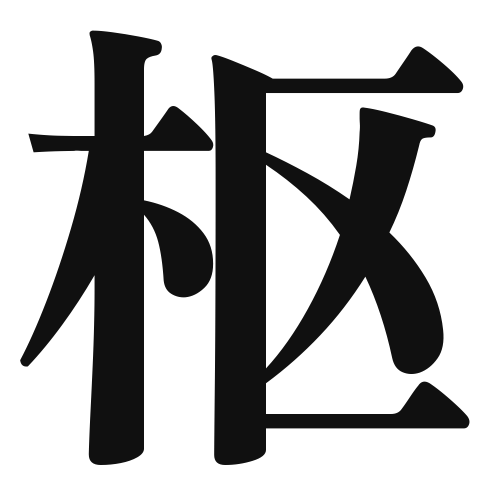1. Overview of Meaning
The kanji “枢” (pronounced “suu”) means “pivot” or “hub.” It represents a central point around which something turns or revolves, often used in contexts related to mechanisms or systems.
2. Formation and Radical
The kanji “枢” is a phonetic-ideographic character (形声文字), which combines both meaning and sound. The left part “木” (tree) indicates that it is related to wood or something made from wood, while the right part “須” (suu) provides the phonetic component.
The radical of “枢” is “木” (tree), which is commonly associated with things made from wood or related to nature.
3. Examples of Usage
Common words that include “枢” are:
- 枢軸 (すうじく, suujiku) – Axis
- 枢密院 (すうみついん, suumitsuin) – Privy Council
Example sentence in daily conversation:
「この機械の枢はとても重要です。」
(This machine’s pivot is very important.)
4. Synonyms and Antonyms
Similar kanji with related meanings include:
- 中心 (ちゅうしん, chuushin) – Center, which refers to the middle point of something.
- 核 (かく, kaku) – Nucleus, which often refers to the core part of an atom or a central part of a system.
Antonyms include:
- 周辺 (しゅうへん, shuuhen) – Periphery, which refers to the outer limits or edge of an area.
5. Cultural and Historical Background
The kanji “枢” has historical significance in Japanese culture, often associated with governance and central authority. It appears in various proverbs and idiomatic expressions, emphasizing the importance of central roles in both machinery and society.
For example, the phrase “枢を回す” (すうをまわす, suu wo mawasu) means “to turn the pivot,” symbolizing the act of making crucial decisions that affect the whole system.
